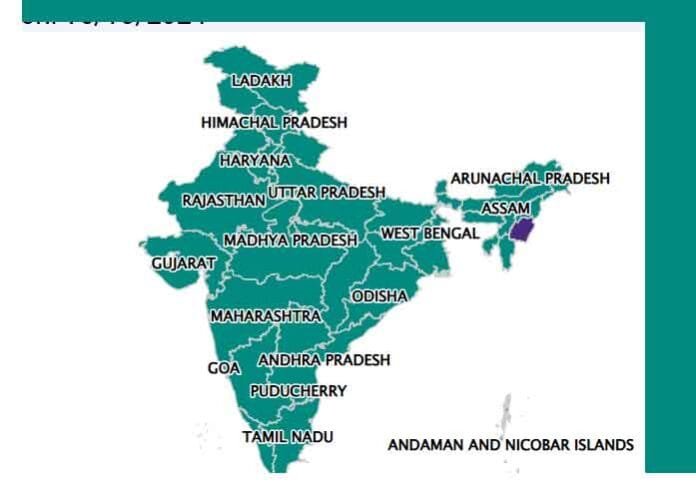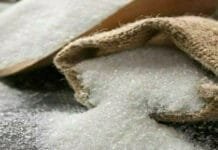New Delhi – Farmers from MP to Rajasthan, UP, Bihar and Haryana are currently facing shortage of DAP (Di-ammonium Phosphate). DAP is the second most consumed fertilizer. For this, farmers have to stand in line for two days and in some states it is being distributed under police protection. Despite all the government claims, why is it that farmers are facing DAP crisis at the time of sowing important crops like wheat and mustard. In many states, farmers have paid two thousand rupees each to buy 50 kg DAP bags worth Rs 1350 in black, because if it is not used then it can have a bad effect on crop production.
The situation is such that not only in BJP and Congress but also in states ruled by other parties, farmers are facing shortage of DAP. The reason is that the availability of DAP in the country is not as much as the demand. In such a situation, most of the states have not been able to get the supply of DAP as per their requirement. The Government of India is dependent on imports to provide DAP to its farmers and this year its imports have declined. The effect of which is clearly visible on the ground. But why did this happen? Even after 77 years of independence, we are not able to provide fertilizers to the farmers. Farmers have to face lathi charge for this.
The shortage of DAP in the country can be gauged from the fact that many states have not received even half the consignment of their requirement. In BJP-ruled MP, 1,57,000 metric tonnes of DAP was required during September 2024, while the availability was only 69,702.9 metric tonnes. In BJP-ruled UP, 1,95,000 metric tonnes of DAP was required during September 2024 and only 1,35,474 tonnes were available here. In Maharashtra, ruled by BJP and its allies, 65,000 metric tonnes of DAP was required, while the availability was only 15,671.7 metric tonnes. In BJP-ruled Chhattisgarh, 10,000 metric tonnes of DAP was required during September 2024, while the availability was only 6,840.1 metric tonnes. In Congress-ruled Karnataka, 41.630 metric tonnes of DAP was required during September 2024, while the availability was only 23,367.96 metric tonnes. In Congress-ruled Telangana, only 12,139.7 metric tonnes were available during September against the requirement of 20,000 metric tonnes. In TMC-ruled West Bengal, only 27,830.61 metric tonnes of DAP reached during September 2024 against the requirement of 32,680 metric tonnes.
Farmers’ issues are politically very sensitive. At this time, sowing of wheat and mustard is going on. In such a situation, farmers are upset due to the shortage of such an important fertilizer. When there was a shortage of DAP, the opposition did not take long to surround the government. Congress alleged that the shortage of DAP required for the cultivation of mustard, wheat and some other crops has forced farmers to stand in long queues. The situation has become serious at many places and farmers are forced to protest.
DAP is the most consumed commodity in India after urea. There is a demand of about 100 lakh tonnes of DAP every year. Most of which is met through imports. Therefore, as soon as imports are affected, the possibility of crisis increases. India’s dependence on imports for DAP is increasing year after year. According to the Ministry of Chemicals and Fertilizers, in the year 2019-2020, we imported 48.70 lakh metric tonnes of DAP, which increased to 55.67 lakh metric tonnes in 2023-24. In the year 2023-24, the domestic production of DAP was only 42.93 lakh metric tonnes.
The Ministry of Chemicals and Fertilizers has given the reason for the DAP crisis this year in its statement. The government said that the import of DAP was affected due to the Red Sea crisis going on since January, due to which fertilizer ships had to cover an additional distance of 6500 km through the Cape of Good Hope. It can be noted that the availability of DAP has been affected to some extent by many geopolitical factors. This is also one of them. Efforts have been made by the Department of Fertilizers to increase the availability of DAP during September-November, 2024. On the other hand, according to the Department of Fertilizers, the price of DAP increased by about 7.30 percent from US $ 589 per metric ton in September 2023 to US $ 632 per metric ton in September 2024. However, if the purchase price of P&K fertilizer including DAP increases in the global market, the purchasing capacity of the companies is not affected. Instead of increasing the price, the MRP of DAP has been maintained at Rs 1350 per 50 kg bag since the Covid period.
In fact, the DAP crisis that is being seen in many parts of the country at this time started in September itself. The figures show that there was a huge shortage of 2.34 lakh metric tonnes in the requirement and availability of DAP. Its effect was also seen in October. The pictures of DAP distribution under police protection are being confirmed by the demand and supply figures. In September 2024, 9.35 lakh metric tonnes were required while the availability was only 7.01 lakh metric tonnes.















